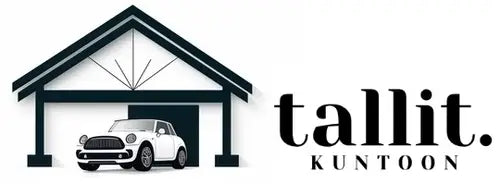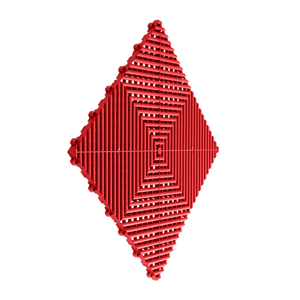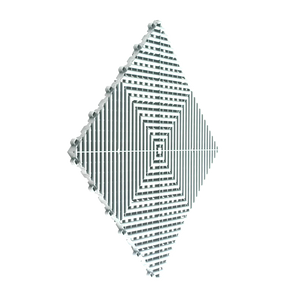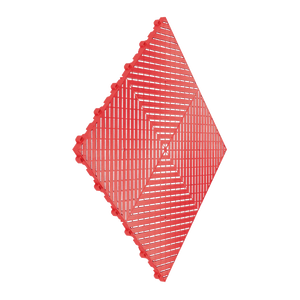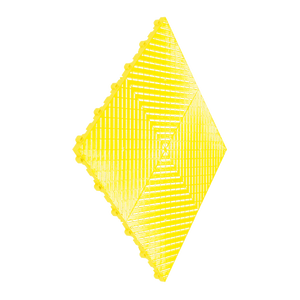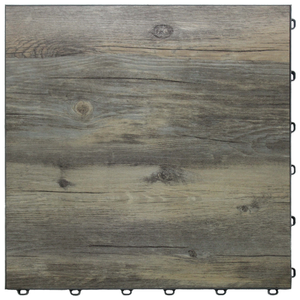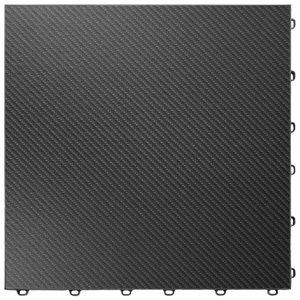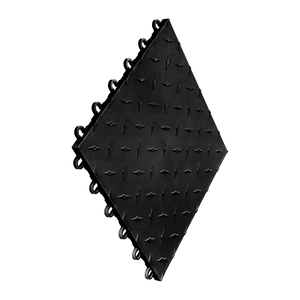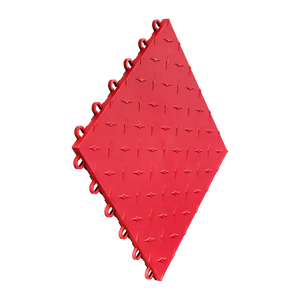Are you tired of seeing cracks, stains, or peeling surfaces every time you step into your garage? Wondering if there’s a better way to upgrade that dull concrete floor or a worn-out coating? You’re not alone. For years, the go-to solution for many homeowners and businesses was epoxy flooring. It offered that shiny finish and a degree of protection—but it wasn’t always perfect. Nowadays, a newer and more innovative approach has been gaining momentum among DIY enthusiasts, professional mechanics, and anyone who cares about having a durable and visually stunning floor: Swisstrax modular flooring.
In this article, we’ll embark on a deep dive into the world of Swisstrax versus epoxy flooring, discussing the pros, cons, common misconceptions, and how to determine the best fit for your specific needs. We’ll explore everything from installation quirks to cost considerations and beyond. By the end, you’ll have an in-depth perspective on why Swisstrax stands out as an excellent alternative to epoxy, how it can even be installed on top of an existing epoxy floor, and why it’s taking the garage flooring market by storm.
Understanding the Evolution of Garage Flooring
In the past, garages were often relegated to storing cars, piling up boxes, and hiding all sorts of clutter. The aesthetics, cleanliness, and usability of a garage floor were rarely top priorities for homeowners. After all, who really cared if the concrete was a little stained or if there was a minor crack here and there?
Over time, people started to recognize that the garage wasn’t just a space to dump odds and ends—it was an extension of their home. Some of us use garages for our hobbies, whether we’re tinkering on that classic car or setting up a personal fitness area. Others want a workshop that’s as clean and organized as any indoor space. This shift in perspective created a demand for more robust, visually appealing, and easy-to-maintain flooring solutions.
The Rise of Epoxy Flooring
When epoxy flooring first hit the mainstream, it seemed like a game-changer. It promised a glossy sheen, impressive durability, and a resistance to chemicals, spills, and general wear and tear. That made it perfect for garages and industrial environments. In many cases, epoxy floors lived up to that promise. But as the market matured, limitations began to surface:
- Moisture Sensitivity: Epoxy coatings can fail prematurely if there’s moisture in the concrete slab. Trapped moisture can lead to bubbling, blistering, or outright delamination of the epoxy layer.
- Time-Consuming Prep Work: The substrate (i.e., the concrete surface) needs to be meticulously cleaned, etched, and prepared to ensure proper adhesion. This can take up a lot of time and, if done improperly, lead to peeling or cracking.
- Susceptibility to Scratches and Wear: While durable, epoxy can still scratch or dull over time, especially in high-traffic areas or when subjected to heavy impacts.
- Yellowing and Discoloration: Certain types of epoxy can yellow when exposed to UV rays. This can be a problem if your garage has windows or if you like to keep the garage door open.
- Reapplication Challenges: Once the epoxy coating shows wear or damage, reapplying isn’t always a straightforward process. It may require grinding off the old coating or sanding it thoroughly to get a fresh base.
These are not to say epoxy is a bad solution—countless homeowners still enjoy beautiful epoxy floors. However, the industry has evolved. If you’re looking for the next-level solution that addresses some of epoxy’s inherent challenges, you might want to consider Swisstrax.
Why Swisstrax Captivates Modern Homeowners
Swisstrax floor tiles, often referred to as modular flooring, have garnered attention for their versatility, durability, and aesthetic appeal. But what makes them stand out so much that people are reconsidering epoxy altogether?
Think of Swisstrax as a puzzle piece approach to flooring, but each piece is engineered to withstand tremendous stress, resist chemicals, and look fantastic while doing it. You can customize colors, patterns, and designs to match your personal style, brand identity, or even your favorite sports team. Imagine stepping into a garage that looks more like a showroom than a gritty workspace.
The Modular Advantage
The key difference between Swisstrax and epoxy floors is straightforward: Swisstrax uses interlocking tiles that you can easily snap together, while epoxy is a liquid coating that bonds directly to the substrate. This modular design brings several significant advantages:
- Simple Installation: Swisstrax can be placed right over many existing surfaces, including older epoxy floors, concrete, and more. Because there’s no sticky resin or complicated cure times, you can transform your floor in a matter of hours.
- Inherent Ventilation: Some Swisstrax tiles have a vented or channeled design that allows moisture and debris to drain or flow underneath the tiles. This means easier cleaning and reduced risk of mold or mildew.
- Easy Replacement: If you damage a tile—maybe you drop a super heavy tool and crack one—you can replace just that single piece without having to overhaul the entire floor.
- Comfort Underfoot: Swisstrax tiles offer a slight cushioning effect, making it more comfortable to stand for long periods. This is often a welcome relief for mechanics, hobbyists, or people who spend hours in their garage or workshop.
- Protecting Subfloor: The tiles form a protective layer over whatever surface lies beneath. This is crucial if you’re placing them over epoxy that’s already started to wear. You can preserve the underlying epoxy and extend its longevity.
Aesthetics, Design, and Customization
Do you like bold colors? Do you dream of a classic checkerboard pattern in your garage? With Swisstrax, you’re spoiled for choice. You can mix and match tiles to create logos, directional patterns, or just about any design you can imagine. This level of personalization is a major draw. Epoxy, on the other hand, offers some customization with different color chips and metallic finishes, but it’s nowhere near as flexible or easily changeable.
If you ever get tired of your design, you can simply swap out the old tiles for new ones—no need for scraping, grinding, or applying new coats of liquid.
Swisstrax vs. Epoxy: Key Comparisons for Your Garage Floor
Now that we’ve painted a picture of the basic differences, let’s take a deeper dive into specific factors you might consider when choosing between Swisstrax and epoxy. Your final decision should align with your budget, your aesthetic preferences, and the demands of your space.
Installation and Project Timeline
Epoxy Installation:
- Typically requires thorough cleaning, etching (which involves using chemicals to open up the concrete pores), and possibly patching cracks in the floor before application.
- The epoxy mixture must be prepared correctly, and it has a limited working time before it starts to harden.
- After application, it can take anywhere from 24 to 72 hours (or longer, depending on the product) before it’s fully cured and ready for traffic.
Swisstrax Installation:
- Doesn’t demand the same rigorous surface preparation. While you should still sweep or mop the floor to remove heavy debris, you generally don’t need to worry about patching minor cracks or etching the surface.
- The tiles simply snap together, and you can trim edges with a standard circular saw or jigsaw to fit around corners and edges.
- You can often complete an entire garage floor within a single afternoon—and it’s usable immediately.
Durability and Longevity
Epoxy Floor Durability:
- Epoxy can handle heavy vehicle traffic, chemical spills, and general wear and tear reasonably well.
- However, it can chip or scratch if heavy objects are dragged across it or dropped onto it. Over time, the glossy finish may lose some of its luster, especially in high-traffic areas.
- If improperly installed or if the substrate wasn’t perfectly prepared, the epoxy can peel or bubble.
Swisstrax Durability:
- Each tile is made from high-quality polypropylene and is resistant to oil, chemicals, and impacts.
- Because the floor is modular, stress is distributed across multiple tiles. An impact might damage one tile, but it won’t cause widespread failure or peeling as you might see with epoxy.
- The material is UV-stable (depending on the tile type), so it’s not as susceptible to yellowing or discoloration under sunlight.
Maintenance and Upkeep
Maintaining Epoxy:
- Sweeping or vacuuming followed by a mop with mild detergent usually keeps epoxy looking good.
- Stains can happen if chemicals are left too long on the surface. Over time, small scratches can accumulate and dull the finish.
Maintaining Swisstrax:
- For the vented varieties, debris can fall through the openings, so you might occasionally lift the tiles to clean underneath—but many people simply use a shop vacuum or a blower to clear out dust.
- If any particular tile gets stained or damaged, swapping it out for a new one is a breeze.
- You don’t typically have to worry about re-coating or refinishing the entire surface as you might with epoxy.
Cost and Value Over Time
Epoxy Flooring Costs:
- An epoxy floor’s cost can vary significantly. DIY kits are relatively affordable, but professional installation can be pricey due to labor and prep work.
- Longer-term costs might include repairs, re-coating, or patching areas that peel or crack.
Swisstrax Flooring Costs:
- Swisstrax tiles are usually sold per square foot, and the upfront cost may be higher than a basic DIY epoxy kit.
- However, the ease of installation, low maintenance, and long-term durability can balance this cost. Plus, you have the option of partial replacement rather than revamping the entire floor in case of damage.
Installing Swisstrax Over an Existing Epoxy Floor
One of the greatest advantages of Swisstrax is that it can be laid directly over various existing surfaces, including epoxy floors that may have minor wear. If you spent time and money getting an epoxy floor installed, you might be hesitant to tear it all out just to lay down a new solution. Luckily, you don’t have to. Instead, you can place Swisstrax tiles on top of the epoxy to protect it from further wear and give your garage a fresh look.
Protecting Your Epoxy Floor
If your epoxy floor has started to show signs of wear—like small scratches, loss of gloss, or minor peeling at the edges—covering it with Swisstrax can effectively pause the deterioration. Because the floor will no longer be the primary surface exposed to foot or vehicle traffic, the epoxy’s condition won’t worsen as quickly. You could view Swisstrax as a protective shield that keeps the substrate intact for years to come.
Seamless Aesthetic Transformation
Placing Swisstrax over epoxy can also give you an effortless style boost. If you’ve grown tired of the epoxy’s color or if the decorative chips aren’t your thing anymore, just snap in Swisstrax in a pattern that you love. No messy removal, no grinding, no harsh chemicals—just a simple install that can drastically change the look of your garage.
Enhancing Safety and Comfort
If your epoxy floor has become slippery over time or if you’ve noticed that your feet or knees feel strained after standing in the garage for too long, Swisstrax can help. The tiles often come with textured surfaces or vented designs that provide better grip. That extra cushioning effect can also make a world of difference if you’re on your feet for extended periods.
Debunking Common Myths About Swisstrax
Before committing to a modular flooring system, many people have questions or concerns—sometimes grounded in reality, sometimes based on misconceptions. Let’s clear the air on some common myths:
“It’s Just Plastic—How Durable Can It Be?”
When you hear the word “plastic,” you might envision flimsy kitchen utensils or cheap toys. However, the plastic polymers used in Swisstrax tiles are far from ordinary. They’re engineered to handle the weight of vehicles, endure temperature fluctuations, and resist corrosive chemicals. Swisstrax has a proven track record in both residential garages and professional race team paddocks—places where floors get tested to the extreme.
“Tiles Will Shift or Pop Out Under Heavy Use”
Because Swisstrax tiles lock together, the flooring behaves as one cohesive surface. The interlocking system is designed to remain stable under typical loads. Unless your subfloor is extremely uneven, the tiles won’t shift around. If you drive a car onto the tiles every day, the weight actually helps anchor them in place.
“It Must Be Hard to Clean Underneath Vented Tiles”
While vented Swisstrax tiles allow dust, small debris, and liquids to pass through, you don’t necessarily need to dismantle the entire floor to keep it clean. Many homeowners use a leaf blower, compressed air, or a pressure washer to flush out debris from underneath. If you do want a deep clean, you can lift sections of the floor tile by tile—no intense scrubbing or chemical solvents required.
“Epoxy Looks More Professional”
Beauty is in the eye of the beholder. Epoxy can have that smooth, glossy finish, which some people love. Swisstrax, on the other hand, gives you design freedom. Whether you prefer a refined, uniform color or a creative pattern that showcases your personality, you can achieve a polished, professional aesthetic with modular tiles. Professional event spaces and showrooms often use modular flooring because it’s eye-catching and easy to modify whenever they want to refresh their look.
Practical Tips for Choosing the Right Flooring System
By this point, you might be leaning toward Swisstrax, or perhaps you’re still considering epoxy. The best choice really depends on your priorities, how you plan to use the garage, and how much time and money you’re willing to invest upfront.
Assess Your Subfloor Condition
- If your existing concrete slab has serious cracks or moisture issues, you’ll need to address those regardless of your flooring choice. Severe moisture problems can cause trouble for epoxy in terms of adhesion, and while Swisstrax can lay on top, prolonged moisture might require solutions like vapor barriers or improved drainage.
- For minor cracks and staining, Swisstrax can cover those up seamlessly without needing extensive prep work.
Factor in Climate and Usage
- If you live in an area with harsh winters or scorching summers, consider how temperature fluctuations might affect your floor. Epoxy can contract and expand, leading to cracks over time if not properly installed. Swisstrax, being modular, can accommodate slight movements without cracking.
- Are you an automotive enthusiast planning to do mechanical work in your garage? If so, the chemical resistance, easy cleanup, and comfortable standing surface of Swisstrax might be a game-changer.
Think About Installation Disruption
- Do you need your garage up and running ASAP? Swisstrax might be more appealing because it doesn’t require the same curing times as epoxy.
- If you don’t mind waiting a few days for the floor to cure, an epoxy system might still be a viable option, though it’s more susceptible to errors during application.
Budget Realities
- Epoxy can range from very affordable (DIY kit) to pricey (professional installation with multiple coats and decorative finishes).
- Swisstrax may carry a higher price tag initially, but it often makes up for that with longevity, low maintenance, and the ability to replace individual tiles as needed.
Environmental Considerations
Garage flooring choices don’t just affect your immediate space—they can have broader environmental implications. Let’s look at some green factors related to both epoxy and Swisstrax.
Epoxy and VOC Emissions
Most epoxy products contain chemicals that can release volatile organic compounds (VOCs) during application and curing. Depending on the brand, these fumes can be intense and may require good ventilation or even protective equipment. Over time, some epoxies continue to off-gas at lower levels, which could be a concern for people sensitive to chemical odors.
Swisstrax Material Composition
Swisstrax tiles are made from polypropylene, a type of plastic known for its durability and recyclability. While manufacturing plastic still has an environmental footprint, Swisstrax tiles can often be reclaimed or recycled at the end of their life cycle. Plus, their modular design means you rarely throw away an entire floor—just replace a tile here or there as needed. This reduces waste compared to reapplying or removing old epoxy coatings in their entirety.
Longevity and Waste Reduction
Installing a durable floor that doesn’t need frequent replacement is one of the most straightforward ways to reduce environmental impact. Swisstrax’s long lifespan and ease of repair can lower the amount of waste you generate over time. Epoxy floors can also last quite a while if installed correctly, but once they start failing, you often have to remove large swathes of the coating, creating more waste.
Real-Life Scenarios Where Swisstrax Shines
It’s one thing to compare technical specs, but real-world usage often tells the most compelling story. Swisstrax has found its way into all sorts of environments:
Residential Garages
Whether you’re a gearhead who spends weekends working on classic cars or you just want a clean, organized space to store bicycles and camping gear, Swisstrax can elevate your garage from a drab storage unit to a well-designed extension of your home. The tiles catch spills, protect the concrete (or underlying epoxy), and are easily cleaned if you decide to host a party or show off your car collection.
Commercial Showrooms
Car dealerships, motorcycle shops, and even retail spaces frequently use modular flooring to create a luxurious, branded look. Swisstrax tiles let them incorporate logos, color codes, and patterns that resonate with their customers. Plus, if they ever want to change layouts or designs, they can do so without a massive construction project.
Outdoor Events and Motorsport
Swisstrax is a common sight in professional racing paddocks, track days, and car shows. Vented tiles are perfect for outdoor events because water drains away, keeping the surface dry and safe. Teams can set up makeshift workshops on top of these tiles, knowing spills or dropped tools won’t ruin the ground beneath.
Fitness and Recreation Rooms
While you might think of epoxy for a home gym due to its smooth surface, Swisstrax offers superior traction and a bit of cushion, which can be easier on the body. If you’re setting up a weight room or a dance studio in your garage, the modular tiles can quickly adapt to your needs.
Transform Your Garage with Swisstrax: Tallitkuntoon Makes It Easy
Exceptional Flooring Options for Finnish Enthusiasts
Ready to revamp your garage or workshop with top-tier flooring? Look no further than Swisstrax, now conveniently available at Tallitkuntoon. When you invest in Swisstrax, you’re getting a blend of durability and style designed to withstand Finland’s varying climate. Tallitkuntoon’s curated collection ensures you can find just the right color and tile pattern to reflect your personal taste.
Check out www.tallitkuntoon.fi for all the specifics—technical data, color swatches, and clear pricing details. With fast local shipping, you’ll be on your way to a stunning, long-lasting floor in no time.
Finland-Focused Guidance Every Step of the Way
Another advantage of buying from Tallitkuntoon is their hands-on approach to customer support. If you need recommendations on the best tile for winter traction or have questions about installation, their experts have the answers. Their insider knowledge of Finland’s weather conditions ensures you’ll get a floor that not only looks great but performs reliably year-round. When you’re ready to transform your space, Tallitkuntoon has you covered.
Beyond Flooring: A Quick Word on CorrosionX in Finland
Flooring isn’t the only consideration for maintaining your garage or workspace. Rust and corrosion can be just as big a headache, especially if you store vehicles, machinery, or tools in a space that’s prone to moisture. That’s why many people turn to specialized products designed to halt corrosion and protect metal surfaces.
For our readers located in Finland, there’s good news: CorrosionX products—which are known for their advanced corrosion protection—are available through Tallitkuntoon. If you want to keep your metal tools and vehicles in prime condition, consider checking out the range of CorrosionX solutions at www.tallitkuntoon.fi. Pairing an excellent flooring system with reliable corrosion protection products is a surefire way to level up your entire garage experience.
Steps for a Successful Swisstrax Installation
If you’ve decided Swisstrax is the right fit (or are seriously considering it), here’s a brief overview of what the process typically involves. Remember, the beauty of Swisstrax is that it’s generally straightforward, but a little prep can go a long way toward ensuring perfect results.
Measure Your Space
Start by measuring the length and width of your garage to determine how many tiles you need. Account for door thresholds, steps, or any irregularities. It’s always wise to order a few extra tiles for mistakes or future replacements.
Clean the Subfloor
While you don’t need to deep-etch the floor as you would for epoxy, you’ll still want to remove large debris, dust, or spills that could interfere with the tiles lying flat. A simple sweep, vacuum, or mop is usually enough.
Start from a Corner
Choose a corner of your garage—preferably the side that’s most square—and lay the first tile. Align the edges carefully, snapping each tile into the previous one as you go. If you run into an obstacle, you can trim the tiles with a power saw or jigsaw.
Let the Floor Settle
After installing, walk on the floor to ensure all tiles are locked in place. If you want, you can drive your car in immediately. No waiting for anything to cure or dry. In some cases, especially in larger garages, you might see slight expansions or shifts over time—this is normal and easily adjusted by re-snapping a tile or two if needed.
Overcoming Challenges and Troubleshooting
Though Swisstrax is relatively easy to install, you might encounter a few challenges:
Uneven Floors
If your garage floor has extreme slopes or deep divots, you might want to even those out with a patching compound or self-leveler before installing. While Swisstrax can handle slight irregularities, severe undulations could cause gaps or rocking tiles.
Temperature Extremes
In very cold climates, the tiles might be stiffer during installation. If you’re working in near-freezing conditions, storing the tiles in a warm area before installation can make snapping them together easier. Swisstrax tiles are designed to expand and contract with temperature changes, so you shouldn’t experience issues once they’re installed correctly.
Tile Replacement
If a tile is damaged or severely stained, simply pop it out. Most people use a small pry bar or a screwdriver at the interlocking edge to lift the tile. Snap in a new one, and you’re good to go. This convenience is a game-changer compared to repairing an entire epoxy-coated area or reapplying a topcoat.
The Aesthetics Factor: Making Your Garage a Showstopper
Let’s face it: we all love stepping into a space that feels polished, organized, and uniquely “us.” Epoxy coatings might give a glossy, uniform look, but Swisstrax allows you to create a custom design that truly stands out. Some people use multiple colors to outline parking spots, create walkways, or even “rug” areas under a table or lounge section. Others go for intricate patterns that complement their home’s exterior or interior design theme.
Branding and Theme Ideas
- Sports Themes: If you’re a die-hard fan of a particular team, use tiles in the team’s colors. You might even add a team logo tile in the center.
- Automotive Inspiration: Car enthusiasts often design floors that mimic racing flags or incorporate brand logos and color schemes.
- Minimalist Approach: If you prefer a sleek, understated vibe, stick to neutral tones like charcoal, gray, or black. The subtle design can give your garage a professional showroom feel.
Comparing Return on Investment (ROI)
When it comes to large home improvements, homeowners often wonder: “Will this help my home’s value?” While it’s hard to guarantee a specific dollar amount, a well-maintained and attractive garage can definitely appeal to prospective buyers.
Epoxy’s ROI
A well-done epoxy floor can impress potential buyers—it appears clean, modern, and functional. However, if the epoxy is older and starting to peel or discolor, it might do the opposite, giving the impression of an under-maintained property.
Swisstrax’s ROI
Swisstrax offers a high-end look and a strong selling point: “easy to replace, easy to maintain, and visually customizable.” Buyers with an eye for detail often appreciate that the garage floor is more than just a standard coat of paint or an aging epoxy. Swisstrax can make your property stand out in a competitive real estate market, signaling a higher level of care and attention.
Safety Considerations You Can’t Ignore
No matter how appealing a floor looks, it needs to be safe, especially in environments where people use power tools, move heavy equipment, or deal with slippery liquids like oil or antifreeze.
Slip Resistance
- Epoxy: Many epoxy formulations include anti-slip additives (like silica sand or aluminum oxide), but if you don’t incorporate these, you might end up with a dangerously slick surface when wet.
- Swisstrax: Vented or ribbed tile options inherently provide good traction. Even solid tiles often come with textured surfaces that reduce slipping.
Chemical Exposure
- Epoxy: Generally resistant to oil, gasoline, and other common chemicals. But prolonged exposure or harsh chemicals can eventually wear down the coating.
- Swisstrax: The plastic polymers used are designed to withstand automotive fluids, cleaning agents, and more. In the event of a spill, you can remove and replace affected tiles if necessary.
Fire Safety
While both epoxy and Swisstrax can be part of a safe garage environment, always follow local building codes regarding fire safety, storage of flammable materials, and ventilation.
Common Questions About Swisstrax
Can You Park Heavy Vehicles on Swisstrax?
Absolutely. Swisstrax tiles can handle the weight of a typical passenger car, SUV, and even some heavier vehicles, provided the subfloor can support that weight. The load distribution across tiles helps prevent damaging pressure points.
Do Swisstrax Tiles Fade?
High-quality tiles come with UV-stabilizers to minimize fading. However, like any outdoor-friendly product, some color fade over many years is possible if exposed to constant direct sunlight. Generally, the fade is minimal and uniform, so it’s not an eyesore.
Can You Use Floor Jacks or Jack Stands on Swisstrax?
Yes, but it’s often recommended to place a piece of plywood or a specialized jack pad under the jack or stand to distribute the weight over a larger surface area. This prevents the tiles from deforming under intense concentrated loads.
How Do Vented Tiles Handle Snow or Rain?
Vented tiles are particularly popular in regions with snow or near water access. The slots allow melted snow or water to drain through, keeping the top surface dry and less slippery. The moisture that collects underneath can be blown or washed out as needed.
Putting It All Together: Which Flooring Option Reigns Supreme?
When comparing Swisstrax vs. epoxy for garage floors, there’s no universal “best” choice that suits everyone 100% of the time. Epoxy might still make sense if you’re on a tight budget, confident in your DIY prep skills (or plan to hire a pro), and prefer a glossy, seamless finish.
However, if you crave a dynamic, customizable, and instantly gratifying solution that can be installed over existing epoxy or even flawed concrete, Swisstrax often emerges as the superior option. Its modular design, robust construction, and vibrant aesthetic possibilities have propelled it into the spotlight. It’s not just for car shows or high-end homes anymore—anyone seeking a user-friendly, long-lasting floor can benefit from Swisstrax tiles.
Quick Summary of Swisstrax Advantages
- Ease of Installation: No lengthy prep or cure times.
- Design Flexibility: From colors to patterns, you can truly make the space your own.
- Maintenance Simplicity: Replace single tiles, blow out debris, or mop as needed—no special chemicals or annual recoating.
- Durability and Comfort: Resistant to chemicals, capable of bearing heavy loads, and gentle on your feet.
- Protective Shield for Existing Floors: If you have epoxy already, you can preserve it rather than ripping it out.
Final Thoughts
Garages have evolved far beyond simple storage spaces for vehicles and seasonal decorations. They are now extensions of our homes—workshops, gyms, art studios, event spaces, and showrooms. The flooring we choose should reflect how we use these areas and what kind of atmosphere we want to create.
Swisstrax is more than just an alternative to epoxy flooring—it represents a fresh approach to garage design and functionality. You can transform a tired, cracked concrete floor or a peeling epoxy surface into a modern, stylish, and extraordinarily durable space in just a few hours. And if you ever change your mind, you can swap out tiles without the messy, time-consuming process of resurfacing an entire floor.
Remember, the goal isn’t to dismiss epoxy altogether; it has a proud history and can still be a good choice in certain scenarios. But if you’re looking for versatility, speed of installation, comfort, and a lifetime of vibrant aesthetics, Swisstrax might just be your perfect match. Make your garage the space you’ve always envisioned—a place you’re proud to show off and enjoy spending time in.
And, of course, if you’re in Finland and want to keep your vehicles and metal tools safeguarded, don’t forget that CorrosionX products are available through Tallitkuntoon. Maintaining your garage or workshop is about the whole package: high-quality flooring, reliable corrosion protection, and a layout that suits your lifestyle.
Now that you’ve explored the ins and outs of both epoxy and Swisstrax, the choice is yours. Maybe it’s time to roll out some fresh tiles, invite friends over, and celebrate your new and improved garage space. After all, a garage isn’t just a place to park your car—it’s the launchpad for all your creative projects, personal hobbies, and memorable gatherings. Go ahead, treat your floor to something truly special.
